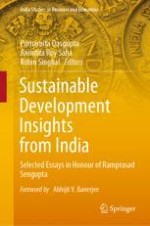2021 | OriginalPaper | Chapter
Towards an Energy-Efficient Economy: Policy Measures by Government of India
Authors : Sangeeta Bansal, M. Rahul
Published in: Sustainable Development Insights from India
Publisher: Springer Singapore
Activate our intelligent search to find suitable subject content or patents.
Select sections of text to find matching patents with Artificial Intelligence. powered by
Select sections of text to find additional relevant content using AI-assisted search. powered by
